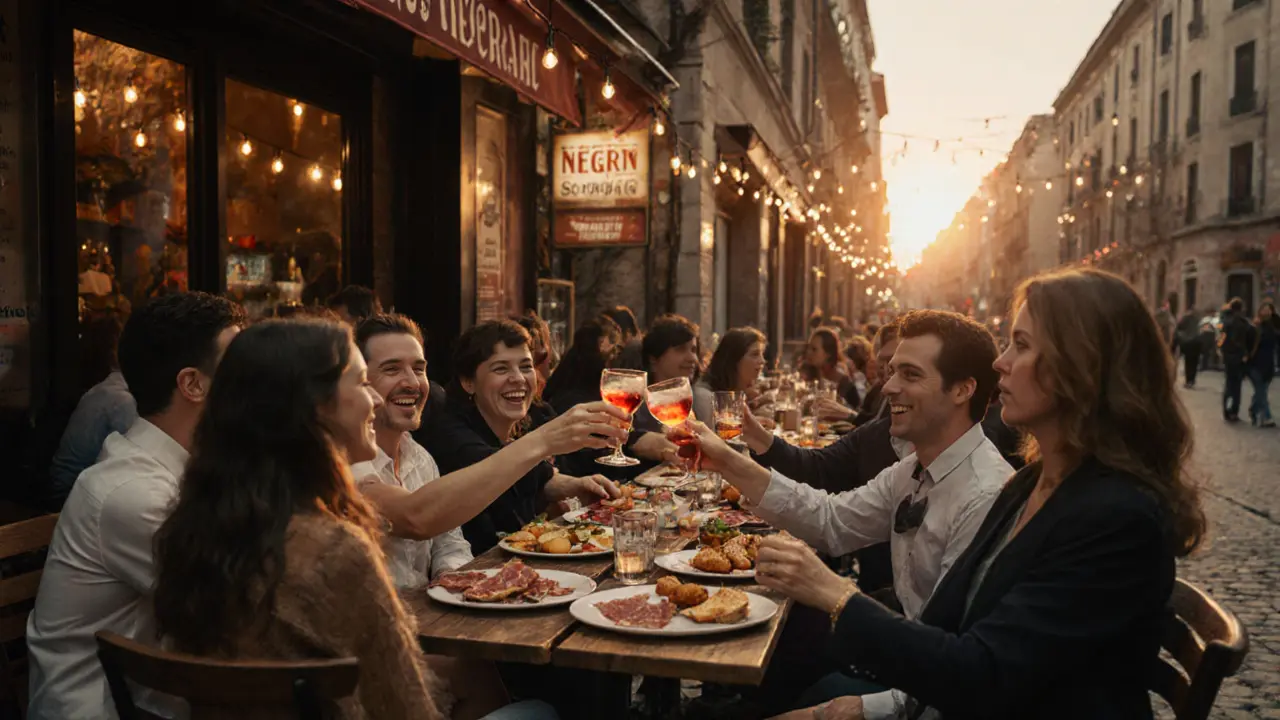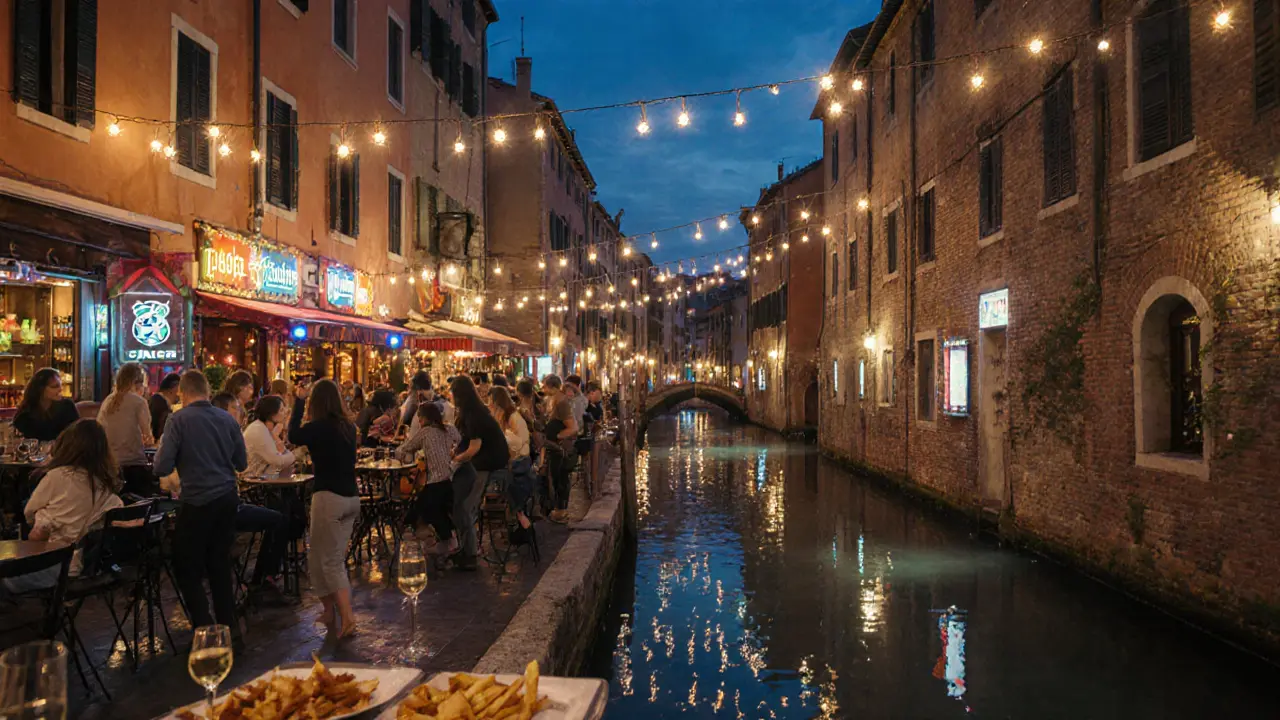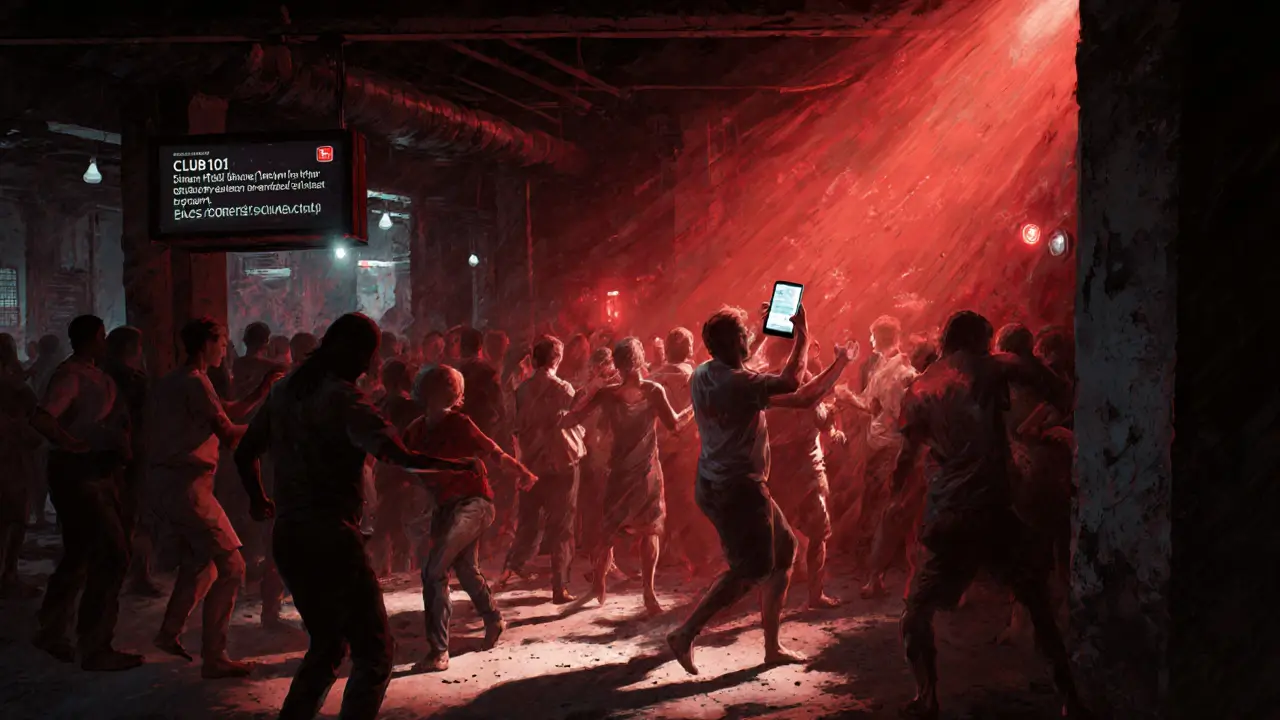The Best Nightlife in Milan: A Guide to the City's Hottest Spots

When the sun sets in Milan, the city doesn’t sleep-it transforms. Forget what you think you know about Italian nightlife. Milan isn’t just about fashion shows and espresso. It’s a place where rooftop lounges buzz with DJs, hidden speakeasies serve craft cocktails, and old-school wine bars spill onto cobblestone streets. If you’re looking for real nightlife in Milan, you need to know where to go-and when.
Where the locals go after work: Aperitivo culture
You haven’t truly experienced Milan until you’ve done an aperitivo. It’s not just a drink. It’s a ritual. Starting around 6:30 p.m., the city’s best bars turn into all-you-can-eat buffets. For €12-€18, you get a cocktail or glass of wine and access to spreads of cold cuts, arancini, bruschetta, and even pasta dishes. It’s not a gimmick-it’s tradition. And it’s how most Milanese unwind before the night really begins.
Head to Bar Basso in the Brera district. This is where the Negroni Sbagliato was invented in 1972. The bar still serves it the original way: Prosecco instead of gin, with a splash of Campari and sweet vermouth. The crowd? Designers, artists, and older locals who’ve been coming here for decades. Don’t expect a loud scene. Expect quiet conversations, clinking glasses, and the smell of orange peel.
For something newer, try Le Brummell in Navigli. It’s a bit pricier at €20, but the food is chef-curated and the crowd is younger, trendier. The terrace overlooks the canal, and on Friday nights, it’s packed with people dancing to indie pop while eating truffle fries.
Navigli: The canal-side party zone
If you want to feel like you’re in a European film, head to Navigli. This is Milan’s most colorful nightlife district, where two canals meet and bars, clubs, and outdoor terraces stretch for blocks. It’s where Milanese go on weekends to drink, dance, and people-watch.
Start at Bar Basso Navigli-yes, the same name as the original, but this one’s open later and louder. Then walk down to La Cucina di Navigli, a converted warehouse with a massive outdoor space and live acoustic sets every Thursday. By 11 p.m., the crowd shifts from wine drinkers to clubbers.
For dancing, Alcatraz is the go-to. It’s not a flashy club. It’s a converted industrial space with exposed brick, a massive sound system, and a lineup that mixes techno, house, and underground Italian beats. Bands like Måneskin and international DJs have played here. Tickets are €15-€25, and you’ll need to arrive before midnight to get in without a line.
Brera: Where the chic crowd hangs
Brera is Milan’s answer to Paris’s Saint-Germain-des-Prés. Narrow streets, art galleries, and candlelit wine bars make it feel timeless. The nightlife here is quieter, but no less intense.
Il Salotto di Tito is a hidden gem. Tucked behind a bookshop, you need to know the password (ask for it when you book). Inside, it’s all velvet couches, vintage records, and mixologists who shake cocktails with precision. They don’t have a menu-you tell them your mood, and they make you something unique. One regular ordered a drink with smoked rosemary, mezcal, and yuzu. It tasted like autumn in a glass.
For something more social, try Bar Basso again. Or head to La Perla, a 1950s-style bar with red booths and a jazz trio playing every night. It’s the kind of place where a 70-year-old professor and a 22-year-old influencer sit side by side, both sipping the same Aperol Spritz.

Porta Nuova: Rooftops and luxury
If you’re dressed to impress and want views that rival the Duomo, head to Porta Nuova. This is Milan’s modern skyline district, home to glass towers and high-end lounges.
Terrazza Aperol on the 17th floor of the Unicredit Tower is the most Instagrammed spot in the city. The view stretches from the Duomo to the Alps. The drinks? Overpriced, but worth it. A classic Spritz costs €16, but you’re paying for the skyline. It’s packed from 8 p.m. to 11 p.m., then clears out. Go early, or don’t bother.
For a more exclusive vibe, try La Scala Club-not the opera house, but a private members’ club on the top floor of a luxury hotel. You can’t just walk in. You need a reservation, and they check your outfit. But once you’re in, the DJ plays rare vinyl from the 90s, and the champagne flows until 3 a.m.
Clubs that actually matter: Beyond the tourist traps
Most tourist guides list Magazzini Generali as a top club. It’s big, it’s loud, and it’s full of tourists. Skip it.
Instead, go to Teatro degli Arcimboldi. It’s not a traditional club-it’s a concert venue that turns into a dance club after midnight on weekends. The lineup is always solid: from local electronic acts to international stars like Charlotte de Witte or Peggy Gou. Entry is €20, and the crowd is real-Milan’s music lovers, not Instagram models.
For underground techno, Club 101 in Lambrate is the secret. It’s in a former factory, no sign outside, and you need to text a number to get the address. The bass hits like a heartbeat. People dance until sunrise. No VIP tables. No dress code. Just music and sweat.

When to go: Timing is everything
Milan doesn’t start partying until after 11 p.m. Don’t show up at 9 p.m. expecting a packed club. That’s when people are still eating dinner or having a second aperitivo.
Weeknights (Tuesday-Thursday) are for bars and lounges. The clubs don’t heat up until Friday and Saturday. Sunday nights are surprisingly good-locals call it "the last call" and head out for one final drink before Monday.
Also, dress code matters. Milan is fashion-forward. You don’t need a suit, but flip-flops and hoodies won’t get you into the better spots. Think smart casual: dark jeans, a nice shirt, clean shoes. It’s not about being rich-it’s about being put together.
What to avoid
Stay away from bars near the Duomo that offer "2-for-1 cocktails" to tourists. They’re overpriced, weak, and staffed by people who don’t care if you’re having fun. Same with clubs that advertise "international DJs" but only play Top 40 hits.
Don’t trust Google Maps reviews alone. Many are fake. Ask a local. Or better yet, follow the crowd. If a bar is packed with people who look like they’ve been there before, you’re in the right place.
Final tip: The Milanese way
Milanese nightlife isn’t about drinking until you pass out. It’s about savoring moments. Slow drinks. Long conversations. Dancing in the street after midnight. One of the best nights I’ve had here wasn’t at a club-it was at a tiny wine bar in Zone 5, where the owner poured me a glass of Nebbiolo, told me about his grandfather’s vineyard, and played Frank Sinatra on an old record player.
That’s Milan. It’s not just about where you go. It’s about how you experience it.
What time do clubs in Milan usually open?
Most clubs in Milan don’t get busy until after 11 p.m. Some, like Alcatraz or Club 101, don’t even start their main sets until midnight. Aperitivo culture means dinner and drinks happen earlier, so don’t expect a packed dance floor before 11.
Is Milan nightlife safe for tourists?
Yes, Milan is generally safe at night, especially in popular districts like Navigli, Brera, and Porta Nuova. Stick to well-lit areas, avoid flashing valuables, and don’t take unlicensed taxis. The biggest risk is pickpockets in crowded bars-keep your bag zipped and your phone in your pocket.
Do I need to book ahead for nightlife spots in Milan?
For rooftop lounges like Terrazza Aperol or private clubs like La Scala Club, yes-book a table online. For clubs like Alcatraz or Teatro degli Arcimboldi, you can usually walk in, but arriving early saves you from long lines. Speakeasies like Il Salotto di Tito require reservations and a password.
What’s the average cost of a night out in Milan?
You can have a full night out for €30-€50 if you stick to aperitivo, one bar, and a club entry. Rooftops and VIP clubs can push that to €80-€120. Drinks range from €8 for a beer to €18 for a cocktail. Club entry is usually €15-€25.
Are there any age restrictions for nightlife in Milan?
The legal drinking age is 18, and most clubs enforce it. Some venues, especially those with live music or late hours, may have a 21+ policy, but it’s not common. ID is always required, even if you look older.